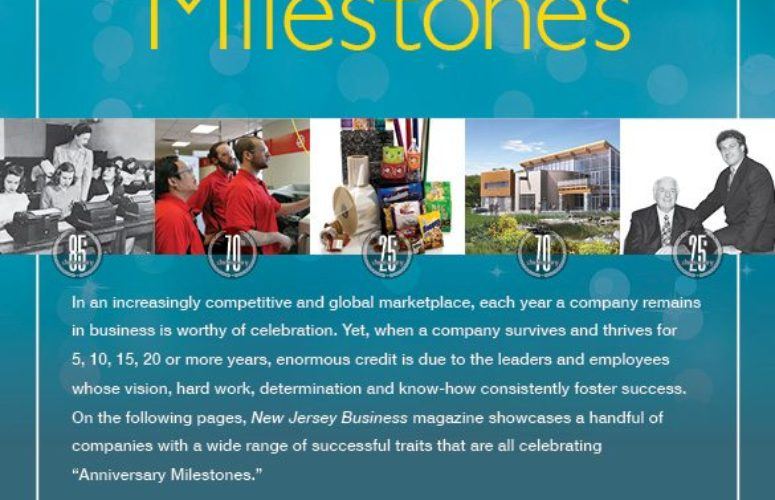
Marketing Assistance for Small Businesses
Small Business Guide
By Anthony Bucci, Assistant Editor On Oct 26, 2015In this day and age, marketing any business can prove to be no easy task. The challenge is even greater for small businesses, which may not have the resources and/or budgets to properly and effectively promote products and services. And, with so many outlets available today, marketing any small business may seem overwhelming. In this article, New Jersey Business looks at the challenges small businesses face and steps they can take to improve their marketing footprints.
“The old saying goes, ‘the more things change, the more they remain the same,’” says Bruce Freeman, president of ProLine Communications and marketing professor at Seton Hall University. “The marketing landscape has changed, the demographics have changed, but the principles of marketing have remained the same.”
Freeman says that, “defining your market and determining what demographics you are going after have always been the first initial key steps” for any marketing plan. However, as Generation X makes way for Generation Y, for example, the demographics can change. So, any business – no matter what its size –“has to do what it can to define its audience,” he says.
“Are you going after men, women or both?” Freeman continues. “Are you targeting 20-to-30-year-olds or 30-to-50-year- olds, etc.? What are their needs? How can you reach them? You have to narrow down where your market lies and target it specifically. That is how you get the best bang for your buck, especially if you are a small business.”
Additionally, the channels on which to market are constantly changing, especially with the rise of social media.
“I think there has been a big shift in how business is done today,” says Jason Rand, partner and creative director, of Guttenberg-based HarrisonRand. “With social media and the pace at which it has been accelerating, it makes for more competition in the marketplace. Because of that, customers are expecting more in terms of communication and customer service, no matter if you are a large or small business. So, I think that marketing is no longer a luxury that it once was.”
Though marketing is an essential part of operating a business today, many small companies don’t seem to have it integrated into their business plan or budget, and lack the bandwidth to effectively promote themselves, according to Daryl Rand, president and CEO of HarrisonRand.
“Whether it is not having enough human or financial capital, many small businesses don’t have enough resources,” Daryl Rand says. “That is where a marketing agency can step in and assist a small business. There are options no matter how large or small a business’s budget is.”
Daryl Rand says that many small businesses leave marketing out of their business plan and initial budget entirely because they don’t realize how important it is.
“Many entrepreneurs undercapitalize their businesses and leave out marketing as a line item when initially starting a venture,” she says. “Marketing has to be as important as a company’s real estate or any other operating expenses.”
With so many marketing outlets available today, small businesses can have trouble deciding where to begin.
“It is exponentially more confusing today,” says Jim Gorab, president of Fairfield-based Turchette. “More choices of platforms mean more considerations when prioritizing precisely where to allocate a limited marketing budget. That is why it is all the more important to know exactly who you’re trying to target, exactly what media that target audience consumes and, of course, what messages within that media are most likely to be persuasive from a sales standpoint.”
Gorab says that Turchette advises its clients to start from “square one.”
“These days, ‘square one’ generally means having a strong website,” he says. “A company’s website is its 24/7 public face, and the place where the vast majority of media messages (ads, public relations placements, etc.) will lead target audiences. A website needs to be easily navigable, error-free and built with an understanding of increasingly complicated search engine optimization standards.”
Jason Diller, vice president, marketing director of Franklin Lakes-based The DSM Group, shares Gorab’s notion.
“I advise clients to focus on owned assets,” Diller says. “That is creating a strong website and producing content for it, like blog posts, for example. Things like that will help drive visitors to the website and provide potential leads. If a business has good content that answers a question its target audience has at some point in the buying process, then that is an asset a company would only spend a few hours producing. The return on investment for something like that is off the charts.” Diller says this is referred to as inbound marketing.
“Inbound marketing is about bringing potential customers in with interesting ideas and content, rather than reaching out to them like traditional push marketing,” he says. “It pulls people to a business, product or service and keeps them coming back for more.”
Today, analytics and metrics have been pushed to the forefront of the marketing industry in understanding what customers and potential customers want and need. Data-driven marketing has made it easier for small businesses to target an audience.
“The biggest benefit of metrics has been the ability to micro-target – to reach segments within segments with extraordinarily specific messaging,” Gorab says. “This sort of ‘just-in-time’ marketing has been a game-changer in terms of both affordability and response/conversion rates, and creating actionable marketing for a fraction of its previous cost.”
However, Gorab says the downside of data and metrics is that small businesses have to know how to read them.
“Anyone can look at data, but it takes a savvy marketer to know what those figures mean and what marketing endeavors should be taken as a next step,” he says. “It’s important to remember that numbers aren’t actionable – people are.”
“Analytics are important today. However, they aren’t everything,” adds HarrisonRand’s Jason Rand. “I think that face time with customers is important and critical to small businesses; physically being there and getting in front of clients and building those relationships. No ‘click’ will ever replace that.”
No matter the marketing strategies and tools available to small businesses today, one thing is for certain: Every small business “is in a street fight for survival,” in today’s economic environment, Gorab says.
“If you don’t take advantage of strategically-sound marketing tools to differentiate your company from the guy down the street, you are immediately at a disadvantage. Marketing will help define how you connect with your customers and will also influence whether or not they recommend you to others. Build a smart, memorable brand and then apply budget-friendly, targeted marketing campaigns to help it grow.”
Related Articles:






